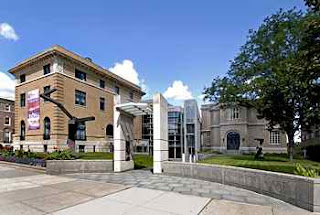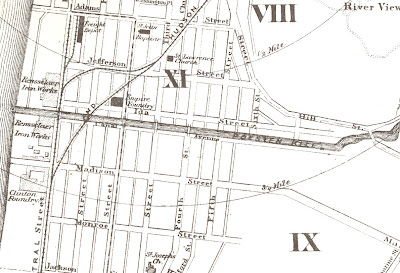 The following is a listing of upcoming lectures appearing at the Albany Institute of History & Art. Call (518) 463-4478 or visit www.albanyinstitute.org for more information.
The following is a listing of upcoming lectures appearing at the Albany Institute of History & Art. Call (518) 463-4478 or visit www.albanyinstitute.org for more information.
Friday, May 6, 2011, 6:00 pm
Dahl Taylor and William Westwood: Graphic Design Presentation
As part of 1st Friday activities, the Albany Institute will host free presentations on graphic design by two of the Capital Region’s leading designers, Dahl Taylor and William Westwood. In a career spanning more than 25 years, Taylor has created paintings for illustration projects ranging from Broadway play posters to corporate annual reports. He has painted canvases for commemorative limited-edition prints for national memorials and has a 36-foot mural installed in the library of a state university. A board-certified, professional medical artist, William Westwood has more than 25 years of experience creating award-winning medical illustrations (digitally and traditionally), models, anatomical posters, animations, and presentations—all designed to teach anatomy, depict surgeries, educate patients, inform physicians, and promote new drugs and medical products for clients in almost every market in the healthcare industry. The presentations begin at 6:00 pm are free and open to the public.
Sunday, May 8, 2011, 2:00 pm
Ellen Lupton: How to Do Things with Typography: Introduction to an Art
Ellen Lupton, Curator of Contemporary Design at Cooper-Hewitt National Design Museum, and Director of the MFA Graphic Design Program at the Maryland Institute College of Art, will explore examples of contemporary typography and discuss how artists, writers, and designers employ typography as a tool for expression, communication, and action. Lupton is the author of Thinking with Type, 2nd Revised and Expanded Edition: A Critical Guide for Designers, Writers, Editors, & Students (Princeton Architectural Press, 2010) and many other guides to design. The lecture and book signing is free and open to the public.
Sunday, May 22, 2011, 2:00 pm
Paul Shaw: Helvetica and the New York City Subway System
Paul Shaw, an award-winning graphic designer, typographer, and calligrapher in New York City, teaches at Parsons School of Design and the School of Visual Arts. Shaw will speak and sign copies of his newest book, Helvetica and the New York Subway System (MIT Press, 2011). For years, the signs in the New York City subway system were a bewildering hodgepodge of lettering styles, sizes, shapes, materials, colors, and messages. Efforts to untangle this visual mess began in the mid-1960s, when the city transit authority hired the design firm Unimark International to create a clear and consistent sign system. We can see the results today in the white-on-black signs throughout the subway system, displaying station names, directions, and instructions in crisp Helvetica. The lecture and book signing is free and open to the public.
Sunday, June 5, 2011, 2:00 pm
Jeanne Winston Adler: The Affair of the Veiled Murderess
Set in 1853 Troy, New York, Jeanne Winston Adler’s latest book, The Affair of the Veiled Murderess: An Antebellum Scandal and Mystery (SUNY Press, 2011), draws on newspapers, court documents, and other historical records in an attempt to uncover the truth behind an unsolved murder. In the process, she addresses a number of topics important to our understanding of 19-century life in New York State, including the changing roles of women, the marginal position of the Irish, and the contentious political firmament of the time. The lecture and book signing is free and open to the public.
For more information about these lectures and other events, call (518) 463-4478 or visit www.albanyinstitute.org.






